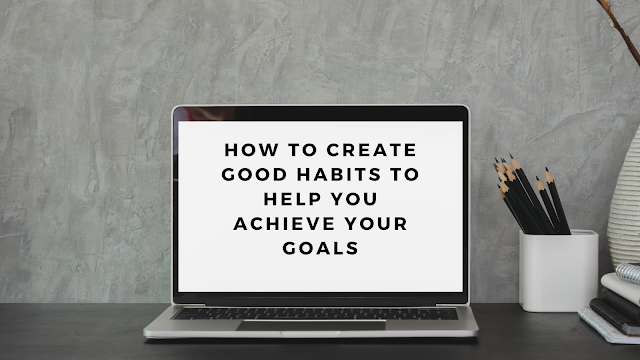Thursday 24 September 2020
How To Lift Your Mood Instantly
If you’re feeling a bit blue, you might be surprised to hear that are
lots of ways to lift your mood in less than a minute. Skeptical? Try these and
see!
1. Put some drops of lavender
and orange essential oils in a diffuser. These oils have been shown to help
with anxiety and to promote calmness and positivity.
2. Have a snack. A handful of
nuts or a square of dark chocolate will send endorphins flooding into your
brain and lift your mood fast.
3. Get some sunshine. Go
outside and get some fresh air and some sunshine. Exposure to sunlight triggers the brain to release Serotonin. Serotonin helps to regulate mood and anxiety. Studies have shown that people
who have significant exposure to light have less depression, fewer sleep
problems, and are even more productive. If you can't make it outside, go and
look out of a window.
4. Go for a walk. Even
walking around the block will help to lift your mood, heart rate, and energy levels.
5. Close your eyes and focus
on your breath. Breathe in and out deeply three times. Focused breathing lowers
your blood pressure and calms the mind. Deep breathing can help reduce stress levels instantly.
6. Lift your shoulders up to
your ears and then let them drop. Do this three times and feel the tension ebb
away. It’s easy to hold onto a lot of tension and stress without realizing it.
7. If you’re feeling nervous
before an interview or presentation, go into the stairwell or the restroom.
Breathing in, open your arms wide, breathing out give yourself a big hug. It’s
almost impossible to do this without smiling.
8. Smile! Smile and make eye contact with a colleague or the guy in the coffee shop or the person serving you at the deli. The physical act of using your smile muscles can genuinely make you feel happy. And it's contagious. Chances are you'll make them smile too and improve their day.
9. Stand up straight, lift
your head, and throw your shoulders back. Adopt a Wonder Woman or Superman pose
and feel the change in your energy.
10. A cup of tea or coffee
will instantly lift your mood. You probably know that caffeine is a stimulant,
but even low or no caffeine hot drinks will give you a boost or calm you down
whether it’s chamomile or green tea, a chai latte or hot water, and lemon.
11. Listen to music that you
love. You can choose custom mood music, or play your old favorites. Music has
been shown to have a powerful effect on mood.
12. Ask for a hug. Probably
not from your boss, but a family member or friend would love to give you the
instant comfort of an embrace.
Wednesday 23 September 2020
Tools To Help You Achieve Your Goals
Some of the most popular motivational tools you can use include simple things like blogs, journals, online calendars, vision boards, and planners. All of these things can really help you stay on track and achieve your goals.
A blog or journal can really help you plan out your steps to reach your goal. You can keep a daily or weekly journal, whatever works best for you. Many people start off by using a weekly journal and then switching to a daily one. As they find that writing down accomplishments and struggles is really helpful, plus it acts as a reference in case the situation happens again.
Calendars and planners in all forms are available online. You can even download apps to your iPhone, iPad, or other mobile devices. This makes sure you can access your planner regardless of your location. There are even apps that allow you to share your progress in places like Facebook and Twitter. You can even challenge your friends and family to friendly competitions. This helps you set and achieve weekly goals, by incorporating a little bit of fun into them.
What motivational tool you use will depend upon your goal and your personality. You may enjoy writing and are automatically drawn to using a blog to stay motivated. You may be more of a private person and prefer the idea of using a planner or app for motivation.
You don’t necessarily have to make any of your writing or blogs public you can make them private and can only share with people you choose. Don’t forget that you can just use an online notepad or word processing software and create your own personal motivational book on your own computer. Another idea is to record videos if this is something that appeals to you. You can record a video about your goals, achievements, ups, and downs. Again, you can make your videos private or public.
Other great tools to use include using motivational tapes and quotes. Personal development tapes are great to take with you as you can listen to them while driving. Vision boards and quotes are fantastic for placing on your wall, mirror, or fridge so you can read them every day. Quotes are very good for reinforcing your goals and abilities on a daily basis, so don’t overlook using them.
Tuesday 22 September 2020
How To Have A Clutter Free Mind
If your home and office are cluttered and disorganized, chances are your mind is too. Mental clutter is restless, moving from brooding over the past to worrying about the future.
It’s going through your mental to-do list and fretting over having too much to do. Above all, mental clutter is exhausting and fruitless. It stops you from getting things done.
Here are some top tips for getting back in control and decluttering your mind.
1. Declutter your environment
When you tidy up your space, things stop being overwhelming and you will be able to see if in fact anything needs doing.
2. Start writing lists
Use whatever method suits you best – a notebook, diary, planner, smartphone app, or an online tool.
3. Journal
Get all those worries, ideas, and what-ifs out of your head by writing them down. That’s especially useful if you can’t sleep because your monkey mind has gone into overdrive.
Keeping a journal will help you work through whatever is worrying you. Often things look a lot less worrisome when they’re on paper. In fact, studies have shown that writing problems down helps the brain to process and find solutions.
4. Leave the past behind
All of these preoccupations take up space and energy in your mind that could be available for much more creative projects. Worst of all, mulling over the past is fruitless.
You can’t change the past, but you can let go of things that are distracting you in your present life.
5. Focus on one thing at a time
You’re much more likely to make mistakes and become overwhelmed. Focus on doing one thing at a time, and you will be calmer and have a completed to-do list of tasks completed properly.
Thursday 3 September 2020
Changing Your Attitude
Practise Gratitude
Let go of the past
Surround yourself with the right people
Meditate
Use Affirmations
Tuesday 1 September 2020
How Much Discharge is Normal in Pregnancy
What is vaginal discharge?
- Itching around the vagina
- Pain or soreness during urination
- Foul or fishy smell
- Green or yellow coloured discharge
- Bleeding
- Very watery or excessive discharge
Thursday 13 August 2020
17 Quotes About Achieving Success
Everyone needs a healthy dose of inspiration on their way to achieving success. Success is not always a straight line, sometimes, we encounter setbacks, disappointments, and failures. We have curated 17 quotes about achieving success to give you that extra boost you need today. Hope you find wisdom, inspiration, and courage to go for your dreams.
''Try not to become a person of success, but rather try to become a person of value.'' Albert Einstein
''I have not failed. I have just found 10 000 ways that won't work.'' Thomas Edison
''The whole secret of a successful life is to find out what is one's destiny to do, and then do it.'' Henry Ford
''Just when the caterpillar thought the world was ending, he turned into a butterfly.'' Proverb
"Start where you are. Use what you have. Do what you have. Do what you can.'' Arthur Ashe
''Success is the sum of small efforts, repeated day-in and day-out.'' Robert Collier
''We become what we think about most of the time, and that is the strangest secret.'' Earl Nightingale
''Though no one can can go back and make a brand new start, anyone can start from now and make a brand new ending.'' Carl Bard
''Whenever you see a successful person, you only see the public glories, never the private sacrifices to reach them.'' Vaibhav Shah
''Never mistake activity for achievement.'' John Wooden
''Successful people do what unsuccessful people are not willing to do. Don't wish it were easier, wish you were better.'' Jim Rohn
''We tend to overestimate what we can achieve in short periods of time and underestimate what God can do with a man or woman over a lifetime.'' Dr Roy Patterson
''Every time you encounter an impressive achievement, ask, what did it take to make that happen? Scratch the surface on any significant accomplishment - you will find grit.'' Paul Stoltz
''Don't be afraid to give up the good to go for the great.'' John D Rockefeller
''If you set your goals ridiculously high and it's a failure, you will fail above other people's success'' James Cameron
''All progress takes place outside the comfort zone.'' Michael John Bobak
''Definiteness of purpose is the starting point of all achievement'' Clement Stone
Tuesday 11 August 2020
How To Create Good Habits to Achieve Your Goals
It should come as no surprise that the habits we form will determine our success or failure. After all, habits already dictate a lot about our lives. That’s why it’s so important to create good habits to achieve goals so that we can reach our fullest potential.
Let’s look at some examples of good habits that can help us achieve our goals:
1. Write down your goals
2. Visualize your goals
Take some time to write down a picture of how the goal will look like when it is accomplished. For example, if your goal is to lose weight, imagine how you will look when you have lost weight in your new slim-fitting clothes.
Paint this picture in your mind every morning as you say your affirmations.
3. Revisit the reason you’re doing what you do.
4. Be
proactive.
5. Focus on
the small stuff.
If you’re dealing with a big goal, such as some serious weight loss, it’s easy to lose your motivation when it feels like you’re not making progress.
Having small goals gives you milestones to celebrate and builds motivation back.
These kinds of goals come from small changes, like planning to eat a little differently (cutting carbs for example), or in taking the stairs instead of using the elevator.
6. Surround yourself with people who motivate you.
That is an easy habit for you to build, in that it involves choosing a little more carefully what company you keep.
Building a habit of meeting with this group regularly not only keeps
you motivated but has the added benefit
of cementing relationships with those around you.
7. Take care of yourself.
If you’ve ever been sick you know it’s impossible to be productive, or even to have a positive attitude when you’re not feeling good. That’s why it’s so important to take charge of your health.
Setting up some healthy habits such as going to the gym more often, or making changes in your meal plan to stay motivated longer just because you’re feeling better when your body is in sync. Your improved health makes this a win-win all the way around.
Building good habits is an awesome way to stay on track to reach your goals. The best part? As with any habit, if you do it enough, you’ll wind up acting without thinking, making motivation an automatic part of your life.
Friday 7 August 2020
How To Exercise To Lower Blood Pressure
Walking has all sorts of health benefits including the ability to help lower your blood pressure and strengthen your heart. Many people at risk for stroke and heart disease are overweight, unhealthy, and have a hard time exercising. Thankfully walking is an easy, low-impact exercise to lower blood pressure that almost anyone can do.
Start where you’re at. Just put on your shoes and head out there. If all you can do is walk for five to ten minutes, start there. It’s a great start and that’s a lot more exercise than you’ve been getting. Stick with it for a week and then see if you can make it for 15 minutes.
If you can go for a 30-minute walk, start there. Pick up the pace, walk briskly and after a week or two, try to go for 45-minute walks. Or break up your walking workout into 3 shorter sessions interspersed throughout your day.
If you have any health conditions and in particular, if you’re suffering from high blood pressure and are at risk for heart disease, discuss your walking plans with your doctor. The two of you can come up with a plan that’s appropriate and safe for you.
Getting out and walking will help you on several different levels. The act of walking itself, particularly if you can go for a walkout in a pretty park is very relaxing and will lower your blood pressure soon after the walk. That’s a terrific benefit of walking and something that will help you feel better right away. But the benefits don’t stop there.
Regular exercise will strengthen your heart. Remember your heart is a muscle and going for a brisk walk works out more than your leg muscles. As you work out your heart, it gets stronger and better at pumping blood through your body.
And as you strengthen your muscles and your body overall, you are likely losing body fat. That’s good news for your blood pressure long-term. All it takes is heading out there for a short little walk each day. As you get stronger those walks will get longer and you may even give swimming or riding your bike a try.
A healthy diet, regular exercise, and losing weight are some of the most effective ways to reduce hypertension regularly. Add to that the fact that walking helps you destress and it’s no wonder that walking regularly has such beneficial effects on your health. Ready to get started? Put on your shoes and go for that first walk.
Monday 27 July 2020
How To Stay Motivated To Work Out
Setting aside some time to go for a 45-minute walk isn’t always easy. We all live busy lives and between family and work, fitting in a workout isn’t always possible.
What if I told you that you didn’t have to dedicate a set block of time for your walking workouts? What if you could get the same health benefits by working in a little more activity here and there throughout your day?
And what if there was a fun little gadget that helped you stay motivated to work out more?
There is and it’s called a pedometer. You can pick up an inexpensive model at your local superstore or order it from Amazon. Or you can go with something a little fancier like a Fitbit for example.
Earn hundreds of pounds cashback every year shopping at over 4500 retailers with the UK's Top Cashback site. Join Quidco & get cashback for your purchases!
But before you head out to spend any money, check your smartphone. Many models have a pedometer built-in. All you need to do is download a free app and you’re good to go.

The pedometer will track how many steps you take on any given day. It will also track how many minutes you’ve spent being active and how many miles you’ve walked.
In other words, it keeps track of how much exercise you get during your day. And the good news is that it doesn’t matter if you head out after work for a 45-minute walk, or if you work out in little spurts here and there throughout the day.
Maybe you start your day by parking a little further away from the office and walking a couple of hundred extra steps. Then you take a quick stroll during your lunch break.
You wrap up your day by walking around the park while your kids play. And just like that, you’ve gotten your exercise in without having to block out any additional time.
Give it a try. Put on a pedometer, or start tracking with that phone you’re always carrying around anyway and see how much you’re walking around any given day. From there, try to get a little more active as time goes by until you hit your stepping goal.
For most of us 10,000 steps per day is a good long-term goal, but if you’re feeling more ambitious than that, go for it.
Keeping track of your steps is very motivating. Looking at your pedometer and realizing you’re 2,000 steps away from your daily goal may be just the motivation you need to head out for that after-dinner stroll.
Thursday 23 July 2020
High Prolactin Levels - Hyperprolactinemia
What is hyperprolactinemia?
What are the common causes of high prolactin levels
- Hypertension(calcium channel blockers and methyldopa)
- Depression
- Nausea and vomiting
- Pain(opiates)
- Heartburn and gastroesophageal disorders
- Mental health disorders( Risperdal and haloperidol)
- Menopausal symptoms (estrogen)
What are the symptoms of high prolactin levels
- Irregular or missed periods
- Production of breast milk when not pregnant or breastfeeding
- Infertility
- Vaginal dryness
- Loss of libido
- Breast pain
- Erectile dysfunction
- Loss of libido
- Infertility( low sperm production)
- Production of breast milk
- Abnormal growth of breast(gynecomastia)
How is hyperprolactinemia diagnosed
How is hyperprolactinemia treated
- Thyroid replacement drugs if hypothyroidism is the cause.
- Replacement of medicines used to treat other conditions causing the elevation of prolactin levels.
- Surgery, if there is a prolactinoma that is not responding to drugs.
- Drugs
Drugs used to treat hyperprolactinemia
Monday 29 June 2020
What is Endometriosis?
This is a disorder in women in which tissues that normally lines the uterus called the endometrium grow outside the uterus on the ovaries, fallopian tubes, and the tissue lining the pelvis.
Sign and symptoms of endometriosis
- Painful periods: This severe pain may begin before and well into the period
- Abnormal periods: This may be heavy bleeding during periods, irregular periods, or spotting.
- Pain during sexual intercourse in the back, lower abdomen, pelvis, rectum, or vagina
- Adhesions i.e. tissues binding the pelvic organ together
- Pain with bowel movement or urination
- Infertility
- Fatigue and tenderness
- The severity of the symptoms doesn’t indicate the degree or stage of the condition. Some may have a mild form of the disease and experience agonizing pain while some people may have a severe form and experience little or no symptoms.

Diagnosis of endometriosis
The symptoms of endometriosis can be similar to symptoms of other conditions like ovarian cysts and pelvic inflammatory disease. Your doctor will do one or more of the following.
- Take a detailed history of your symptoms and family history of endometriosis.
- Physical examination
- Your doctor may use a transvaginal or abdominal ultrasound to produce images of your organs to identify cysts associated with endometriosis.
- Laparoscopy: A minor surgery is done to view the lesions and remove them at the same time.
Stages of endometriosis
There are four stages of this condition
Stage 1: Minimal
Small lesions, shallow endometrial implants on the ovary
Stage 2: Mild
Light lesions and shallow implants on the ovary and pelvic lining.
Stage 3: Moderate
Deep implants on the ovary and pelvic lining.
Stage 4: Severe
Deep implants on the pelvic lining and ovaries. Lesions on the Fallopian tubes and the bowel
Treatment of endometriosis
Endometriosis has no cure but its symptoms can be managed. Treatment options include:
Pain medication
Hormonal therapy
This helps to reduce pain, regulate the hormonal changes that promote tissue growth occurring during endometriosis. These hormonal treatments include:
- Hormonal contraceptives like birth control pills, patches, and vaginal rings can reduce or eliminate pain in severe endometriosis. They work by preventing the monthly build-up of the endometrial tissue.
- Gonadotropin-Releasing Hormone(GnRH) agonists and antagonists – These block production of estrogen which is responsible for the development of female sexual characteristics. Blocking estrogen prevents menstruation and leads to artificial menopause.
Conservative Surgery
This is done to remove abnormal endometrial growths without damaging the reproductive organs.
Hysterectomy
This is a rather radical treatment and you should seek a second opinion before agreeing to this especially if you want to have children.
Do you suspect your symptoms may indicate endometriosis? Consult your doctor as soon as possible for proper diagnosis and management.
Endometriosis: Symptoms, treatment, diagnosis. (n.d.).
obgyn.ucla.edu/endometriosis
Facts about endometriosis. (n.d.).
endometriosis.org/resources/articles/facts-about-endometriosis/
Endometriosis. (2019).
womenshealth.gov/a-z-topics/endometriosis
There are a lot of good reasons to go for a walk. It’s fun, it’s relaxing and most important it’s good for your health. But what exactly are the health benefits of walking?
Walking Gets You Outside In The Fresh Air and Sunshine
No matter how fast or slow you walk, walking gets you outside and in the fresh air. This alone will make you feel better as your body absorbs oxygen and sunshine. Both are important for your health and well-being.
You will find the air quality outside will be much better than the air inside your house. Of course, the sunshine outside will help your body produce all the Vitamin D it needs.

Walking Can Help You Get To And Maintain A Healthy Weight
Walking particularly at a quick pace and doing it regularly can help you get to and then maintain a healthy weight. Yes, you still need to watch what you eat and aim for a healthy diet, but walking can be another tool to help you drop the extra weight.
The nice thing about walking when you’re overweight is that you burn a lot of calories, even on short and slow walks. As you start to lose weight, your overall strength and endurance increases, allowing you to walk longer, further, and faster.
Walking Improves Your Sense Of Balance And Coordination
As you walk, particularly when walking over rougher terrain, you’re also working on your sense of balance and coordination. Just getting in the habit of going for a daily walk will help. But you can work even more on your sense of balance by moving your head around. Turn your head to the right and left as you walk for a count of 30. Then move your head up and down for a count of 30. Doing these simple exercises once or twice as you walk each day will be of great benefit.
Walking Strengthens Your Bones and Muscles
Even though walking is a low-impact form of exercise, it helps to strengthen and tone your body. If you’re just starting out, it is all you need to start to get into better shape. As you get more fit, consider adding weight lifting exercises in addition to your daily walks to continue to get stronger and help develop strong muscles and bones.
Walking Will Boost Your Mood and Fight Depression
The exercise of walking releases endorphins that will help lift your mood and can even reduce depression. Give it a try. The next time you’re feeling tired or are in a bad mood, lace up your sneakers and go for a brisk walk. It works!

















